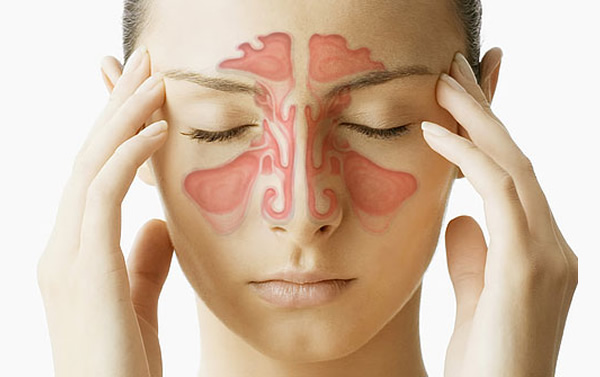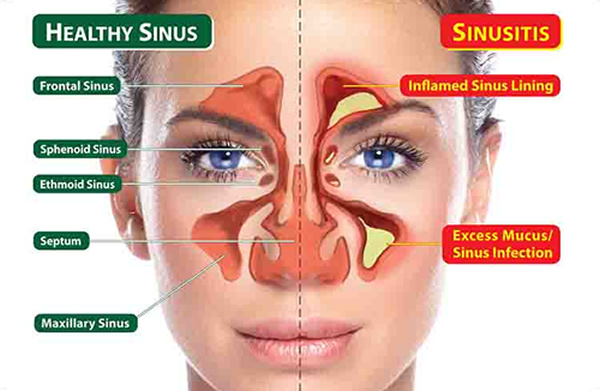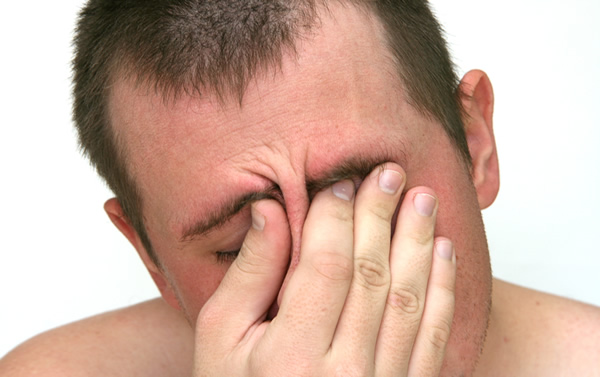*
 Paranasal sinuses are air space located within the bones surrounding the nose and nasal cavity. According to the bone in which they are developed, there are four paranasal sinuses, such as: frontal sinuses, which are usually located at the junction of the vertical and the horizontal part of the frontal bone, maxillary sinuses, which are located in the body of the maxilla; sphenoid sinuses, which are developed in the body of sphenoid bone, but often extend in the extensions of these bones, ethmoid sinuses, which build numerous pneumatic cavities called the ethmoidal cells, which form a labyrinth out of ethmoidal bone. Paranasal sinuses are normally filled with air, and they are opening into the nasal cavity through the communication channels or holes, which enables the natural sinus drainage. Through these holes and channels respiratory mucosa of the nasal cavity has some sinus and bone lining their walls.
Paranasal sinuses are air space located within the bones surrounding the nose and nasal cavity. According to the bone in which they are developed, there are four paranasal sinuses, such as: frontal sinuses, which are usually located at the junction of the vertical and the horizontal part of the frontal bone, maxillary sinuses, which are located in the body of the maxilla; sphenoid sinuses, which are developed in the body of sphenoid bone, but often extend in the extensions of these bones, ethmoid sinuses, which build numerous pneumatic cavities called the ethmoidal cells, which form a labyrinth out of ethmoidal bone. Paranasal sinuses are normally filled with air, and they are opening into the nasal cavity through the communication channels or holes, which enables the natural sinus drainage. Through these holes and channels respiratory mucosa of the nasal cavity has some sinus and bone lining their walls.
Paranasal sinuses forms with the nasal cavity, anatomical and functional entities (unity), so this region can be seen as a unique clinical and surgical aspects. Because of anatomical entities and internal functions of the paranasal sinuses, physiological and pathophysiology connections, paranasal sinuses and nasal pulp chamber are studied collectively under the name of sinonasal complex. Paranasal sinuses and nasal cavity are the initial part of the airway, which in physiological sense is achieving functional and anatomical unity with the lower airways. Everything is subordinated to the smooth flow of necessary air quality (appropriate temperature, humidity and purity) in the airways and to the exchange of gases in the alveoli. Violation of unity functions of the upper and lower airways leads to various pathological conditions. Pathological lesions of the mucous membrane of the nose is often transferred to the mucosa and paranasal sinuses, to which other respiratory diseases are connecting. Regarding the close mutual relations with endocranium and orbits, exteriorization of the pathological process in the sinuses in these areas can often occurs, which are often accompanied by complications that may have a fatal end. Basement membrane is thin, and beneath the epithelium is a thin layer of connective tissue that abuts the periosteum. On this layer serous and mucous glands are located, which are smaller and less frequently compared to the nasal mucosa. the activity of ciliated suppresses mucus toward the openings of the sinuses.

- Obstruction of the nose and the minimum disturbance to the complete unilateral or bilateral nasal blockage
- Headache as a result of the pressure of the trigeminal sensory endings, due to the creation of negative pressure in the pulp chamber of the sinuses, and then the liquid
- Olfactory performance difficulties.
- A disorder of the nasal reflex (respiratory, cardiac, digestive function)
- Voice and speech disorder (rhinophonia Claus)
- Hearing loss (the result of obstruction of the tube leading to the characteristic changes in the middle ear)
- Snoring (a consequence of continuous mouth breathing during sleep)
- Rhinorrhea (more or less abundant varying quality)
- Sneezing (in the form of attacks, salvo)
- Expansion of the nasal bones
- Psychoneurotic interference
- Infections of the lower respiratory tract (due to run-off secretions)
- Local pain may be characteristic regarding to the certain sine (Hed’s zone on the facial skin, and the whole)
- Elevated temperature (about 38 ° C) followed by general weakness and anorexia, which indicates intoxication of the organism.

- Otorhinolaryngologist (ENT) examination.
- Anterior rhinoscopy
- Posterior rhinoscopy
- Radiological examinations: -tomographic images of paranasal sinuses
- MRI
- CT scan
The therapy is used for the alleviation or elimination the symptoms of sinusitis, bronchitis, bronchial asthma, skin disorders such as eczema and herpes.
Sinusitis is an inflammation of the mucous membrane of the sinus, which is manifested by headaches, pain in the sinus canal, nose congestion, with the occasional occurrence of secretions.
Therapy with Bioeliksir products aims to facilitate drainage of secretions, which fills the sinusoidal channels, and then to regenerate and prevents the possibility of the emergence of new infections.
The reactions that occur are: the emergence of secretions from the nose, cough, sputum production, pain in the throat, with the possibility of temperature.
The treatment takes 7-10 days.
When it comes to chronic diseases such as bronchitis and bronchial asthma therapy is used to evacuate secretions from the respiratory tract of all parties.
The goal of therapy is to discharge pump (puffer) from service, without accompanying symptoms(problems).
Reactions are individual, caused by disease severity, so that the treatment itself is organized on the basis of these reactions.